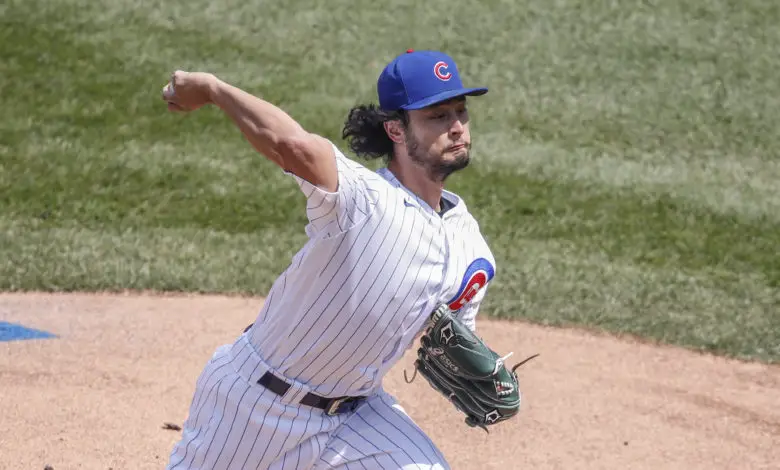
Yu Darvish Working One Pitch at a Time, Craig Kimbrel Navigating Curves
It felt like a nauseating trip on the here-we-go-again roller coaster when Yu Darvish gave up a home run to José Abreu, the slugger’s sixth of the series, to lead off the 2nd inning on Sunday. The White Sox had been a mistake-obliterating juggernaut over the weekend and they seemed destined to do more of the same against Darvish. Except that he basically didn’t make any mistakes.
Even the pitch to Abreu wasn’t bad, skirting the bottom of the zone like something a mere mortal would have chopped to short. But when you’re that hot, everything is a center-cut meatball.
Though Darvish didn’t abandon the cutter after the big hit, he began to dial it back in favor of the slider when he started getting better results on the latter. He struck Tim Anderson swinging at it to open the game, then did the same with Luis Robert in the 2nd. Darvish’s first three and last four strikeouts came via whiffs on the slider, including three of the last four batters he faced.
By the time his work was done, Darvish had thrown a season-high 28 sliders, just one less than in his three previous starts combined. Eight of those came in his final frame, intertwined with five cutters to baffle batters. The only fastball he threw in the 7th begat a single, but only because a late swing by Nomar Mazara caught enough of it to push it the opposite way.
More than just what Darvish throws is how he throws, which is to say very carefully and deliberately. After several years in MLB, Darvish admitted he’s finally getting more comfortable returning to the slower style he learned back in Japan. Rather than just being slow for the sake of being slow, he’s taking time to concentrate on each of his offerings.
“I’m just focusing on next pitch, next pitch, next pitch,” Darvish explained per Tony Andracki. “I don’t care about yesterday. José Abreu hit the homer, but I don’t care that he hit the homer, I’m just focusing next pitch.”
Coincidentally, that’s akin to a concept espoused by Sox announcer Steve Stone during Friday’s broadcast. The 1980 Cy Young winner and former Cubs broadcaster is known as a baseball oracle and was ahead of his time when it came to mental skills. Stone had brought his old glove to the booth in order to display a small triangle he had drawn on it.
As he went on to explain to broadcast partner Jason Benetti and the folks watching at home, the triangle was a shape that signified strength to him. When he found his focus drifting, he would look at the little mark until nothing else in the world existed. Then he’d pitch.
When the only thing in the world that exists is that triangle have your son either pitch or hit. It’s a concentration device that works
— Steve Stone (@stevestone) August 24, 2020
Darvish may not have a specific device or trigger, but it’s evident that his general practice is somewhat similar to what Stone did four decades ago. By blocking out the mental noise and executing each pitch to the best of his ability, Darvish has emerged as the Cubs’ ace and a legit Cy Young candidate who can beat batters in any number of ways.
Though a direct comparison can’t be made between Darvish and Craig Kimbrel, seeing the former (and future?) closer putting enough confidence in his curveball to throw it 14 times in 19 pitches Sunday afternoon was huge. Walking two men on 10 pitches before being lifted for Jeremy Jeffress was not the way you’d like to see his appearance end, but Kimbrel got two swinging strikeouts and three total whiffs on the curve.
To put that in perspective, he’d only gotten three total swinging strikes on the curve in his seven previous outings combined this season. Doubling that against the first four batters he faced Sunday is very significant, and even the walks weren’t that bad when you really look at them. He was missing with intent against both Yasmani Grandal and Abreu, the latter of whom took a pair of pitches just off the border that could easily have been called strikes.
Kimbrel may not be all the way back, but his ability to trust the curveball again makes him a legitimate option at the end of games just a short while after it seemed like a DFA might be around the corner.
